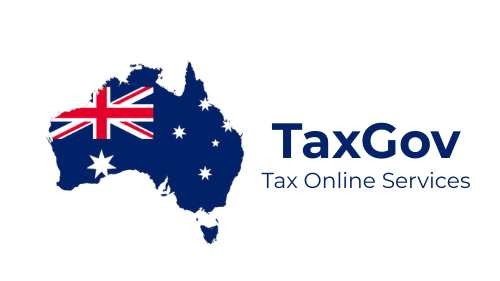- 1 How to get a TFN as a new resident in Victoria
- 2 How to get a TFN for a child if born in Australia
- 3 How to get a TFN when moving from overseas to Victoria
- 3.1 What to do if you lose your TFN
- 4 How to get a TFN as a parent applying on behalf of your child
- 4.1 Understanding the importance of a TFN
- 5 How to get a TFN as a student in Victoria
- 5.1 Maintaining privacy and security with your TFN
How to get a TFN as a new resident in Victoria
How to get a TFN as a new resident in Victoria can be a straightforward process once you understand the steps involved. Firstly, it’s important to know that a Tax File Number (TFN) is crucial for anyone intending to work or manage their finances in Australia legally. As a new resident in Victoria, you should apply for a TFN as soon as possible to avoid paying the highest personal tax rate on your earnings. The process is relatively simple and can be done online through the Australian Taxation Office (ATO) website. You will need to provide certain personal details such as your name, date of birth, and current address. It’s advisable to have your passport and immigration documentation on hand as these will be required for identification purposes. Once submitted, the ATO will send your TFN to the postal address you provide, typically within 28 days. It’s essential to keep this number confidential to prevent identity theft or fraudulent activities related to your financial transactions.
How to get a TFN for a child if born in Australia
How to get a TFN for a child if born in Australia involves a slightly different process than for adults. If your child was born in Australia, applying for a TFN for them is primarily beneficial once they have an income such as from savings interest or investments. While not obligatory, acquiring a TFN early can simplify tax processes later in life. Parents or guardians will need to fill out a paper TFN application form tailored for individuals, which can be requested from the Australian Taxation Office. This form requires the child’s full name, date of birth, and birth certificate details. After completing the application, it can be submitted either by mail or in person at an ATO shopfront. Sending certified copies of identification documents with the application is necessary to ensure the processing isn’t delayed. Once processed, the child’s TFN will be sent to the address provided in the application. Keeping a TFN safe and private is crucial as it protects your child’s identity and financial security.
Need help getting your TFN?
We can help you apply for your TFN quickly and easily. Let our team handle the process for you.
How to get a TFN when moving from overseas to Victoria
How to get a TFN when moving from overseas to Victoria is an essential step for any foreign resident planning to establish a life or career in Australia. Upon arriving, applying for a TFN should be among your top priorities to ensure you’re taxed correctly. You can apply for a TFN online once you have arrived in the country. Your visa or entry documents will be necessary to verify your identity; hence, it’s best to have them readily available. For those who are non-residents, the process involves submitting an application through the ATO’s website, which is designed to accommodate overseas arrivals. This online application will ask for personal information, visa details, and your current address in Australia. Once the application is submitted, expect your TFN to arrive by mail in approximately four weeks. Having a TFN will facilitate smoother financial engagements, including working, opening bank accounts, and dealing with government services.
What to do if you lose your TFN
What to do if you lose your TFN can be a stressful situation, but there are steps you can take to rectify the issue. First, you should retrace your steps and look through any places where you usually store important documents, such as a safe or personal records folder. It’s also advisable to check with your employer or bank, as they often keep a record of your TFN on file. If these efforts are unsuccessful, contacting the Australian Taxation Office is your next best step. You will need to verify your identity by providing personal details like your birth date and address, as well as additional identification documents. The ATO can reissue your TFN, but this process may take some time, so it’s important to act promptly. To avoid future mishaps, consider storing your TFN securely in multiple locations, both physically and digitally.
How to get a TFN as a parent applying on behalf of your child
How to get a TFN as a parent applying on behalf of your child demands that you follow a systematic process to ensure everything goes as planned. Parents must fill out a TFN application form available via the Australian Taxation Office for children under 16 years of age. On the form, you’ll need to provide specific details about your child, including their full name, date of birth, and place of birth. Moreover, certified copies of your child’s birth certificate and other necessary identification documents must accompany the application. Once the form is duly filled out, it can be submitted by post or directly at an ATO office. It’s vital to remember that if you mail the application, it should be sent with secure postage to mitigate any risk of it being lost. Once processed, the TFN will be dispatched to the address listed on the application. Keeping this number confidential is essential in safeguarding your child’s financial interests in the future.
Understanding the importance of a TFN
Understanding the importance of a TFN is crucial for every individual in Australia, as it significantly impacts your personal and financial activities. A TFN is akin to a personal tax number that not only identifies you within the Australian tax system but also helps you access various government services. It determines how much tax you pay on income sourced within the country. Without a TFN, you may face higher tax deduction rates and a more complicated process in recovering any excess tax. Businesses and banks also use TFNs to manage your financial dealings effectively, such as setting up a savings account or applying for credit. Understanding its role helps you manage your personal affairs efficiently and legally. Keeping your TFN safe is vital, as misuse could lead to identity theft or unauthorized access to sensitive information.
How to get a TFN as a student in Victoria
How to get a TFN as a student in Victoria is an integral step to embarking on your educational or work journey in Australia. Whether you’re an international student pursuing studies in Victoria or a local student aiming to start part-time work, obtaining a TFN is necessary. Students can apply online via the ATO’s dedicated services for students, requiring identification through valid residency and education documents. The online application demands specifics such as your personal details and local address. If you’re enrolled in a higher education institution in Victoria, your school may offer workshops or resources to guide you through the process. Once you complete your TFN application, it typically takes about 28 days to receive it at your stated postal address. This number is crucial for fiscal purposes, ensuring that your earnings are appropriately recorded without unnecessary taxation. Keep your TFN safe and secure, as it forms a significant part of your professional and financial framework in Australia.
Need help getting your TFN?
We can help you apply for your TFN quickly and easily. Let our team handle the process for you.
Maintaining privacy and security with your TFN
Maintaining privacy and security with your TFN is fundamental to protecting your identity and financial information in Australia. Always ensure your TFN is kept confidential by storing it in a secure place. It’s advisable not to share this number unless absolutely necessary with authorized entities like your employer, bank, or the ATO. When communicating about your finances online or through mail, caution against unnecessary exposure of your TFN. Digital security practices, such as regularly updating passwords and not using public networks when sensitive information is involved, are essential preventive measures against unauthorized access. By maintaining strict privacy and security protocols, you reduce the risk of financial fraud and identity theft, ensuring that your dealings remain personal and safe.





